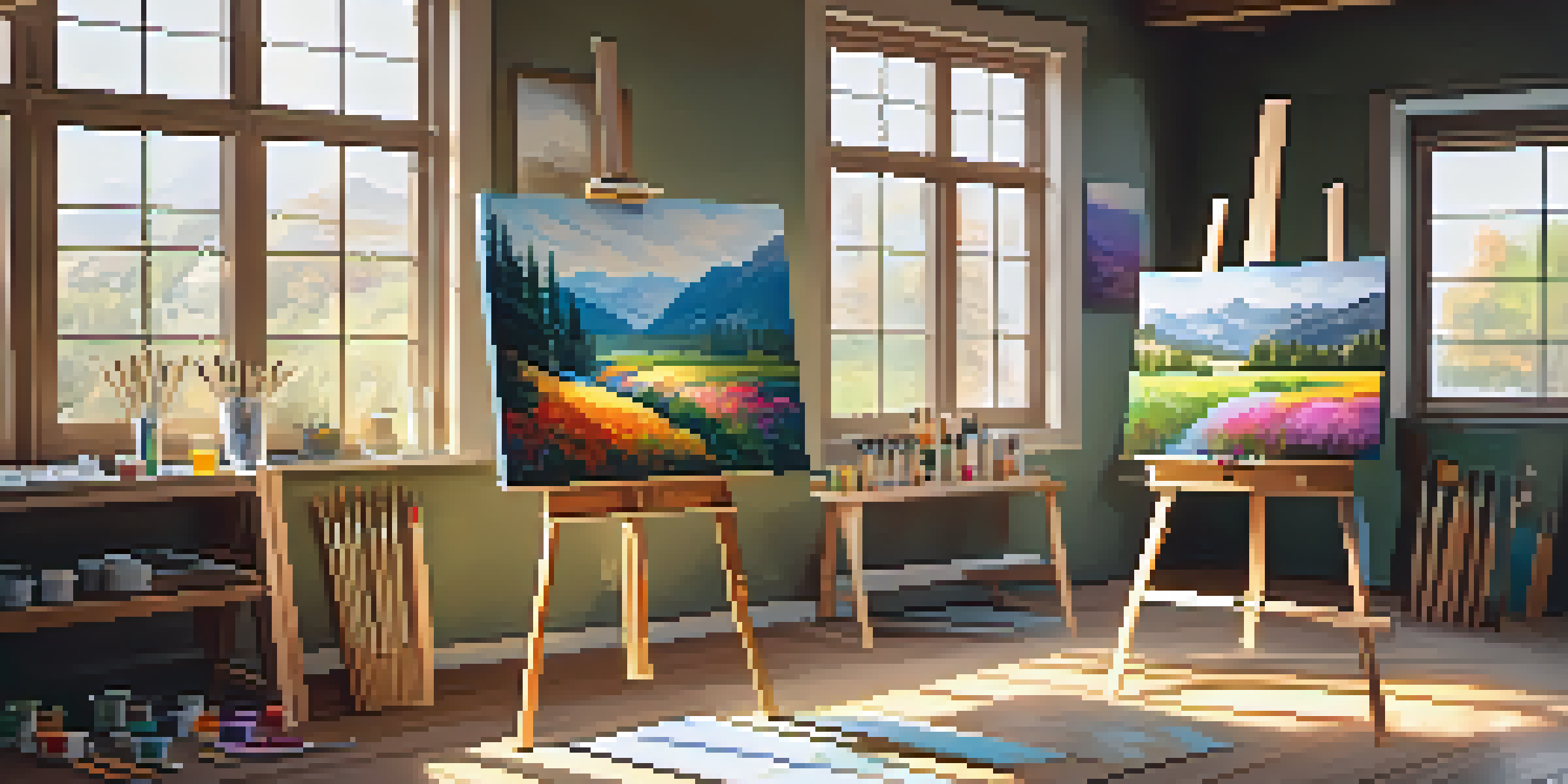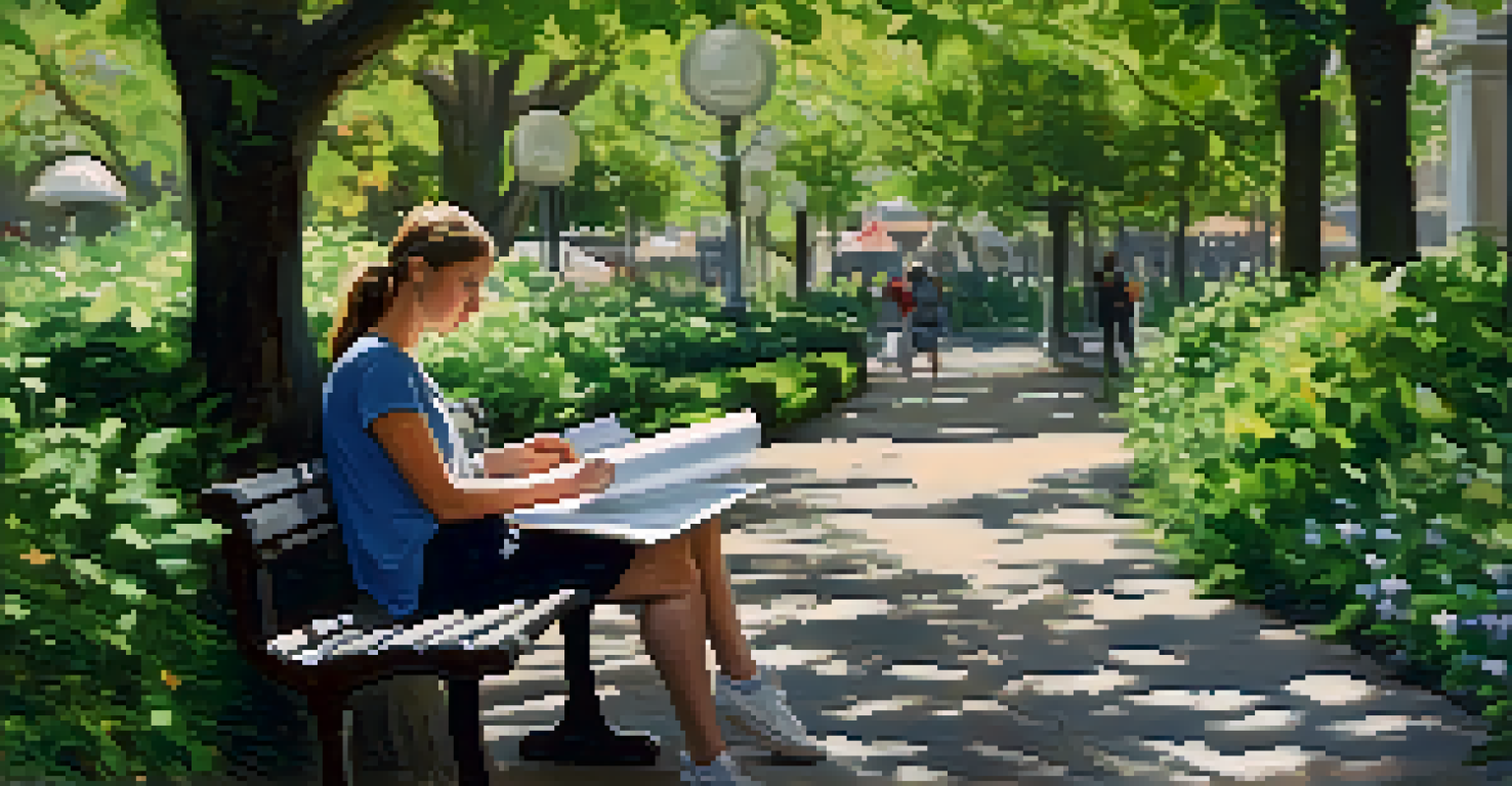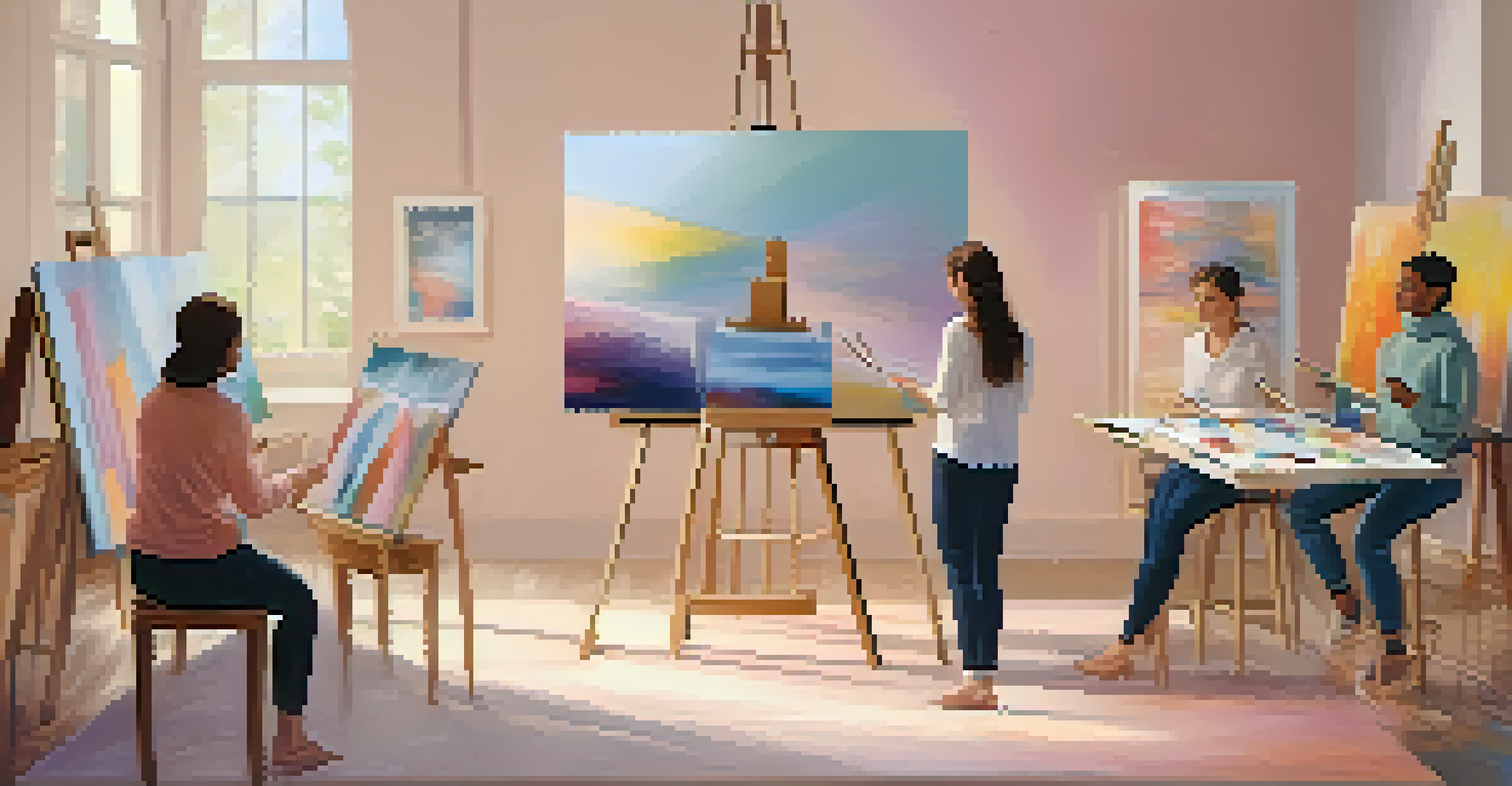Art and Emotional Intelligence: A Neuropsychological Approach

Understanding Emotional Intelligence in Simple Terms
Emotional intelligence (EI) refers to the ability to recognize, understand, and manage our own emotions while also empathizing with others. It's not just about being 'in touch' with feelings; it's about using that awareness to navigate social complexities effectively. Imagine EI as the compass that guides your interactions, helping you respond rather than react in emotional situations.
Art enables us to find ourselves and lose ourselves at the same time.
This skill is crucial in personal and professional relationships, enabling better communication and conflict resolution. For instance, being able to sense when a colleague is overwhelmed can lead to supportive conversations that foster teamwork. Ultimately, EI can profoundly affect overall well-being and success in life.
Art plays a significant role in enhancing emotional intelligence by providing a medium through which we can express and explore our feelings. Whether it's through painting, music, or literature, engaging with art invites us to reflect on our emotions and those of others, making it an invaluable tool in developing EI.
The Science Behind Art and Emotion
Research in neuropsychology reveals that engaging with art activates various parts of the brain associated with emotion and empathy. For example, looking at a painting or listening to a piece of music can trigger emotional responses that help us connect with our feelings on a deeper level. This process mirrors the way we interpret emotions in others, enhancing our empathetic abilities.

Interestingly, studies have shown that individuals who regularly engage with art tend to have higher levels of emotional intelligence. This correlation suggests that the act of creating or appreciating art can train our brains to be more attuned to emotional cues. Just like a workout strengthens our muscles, artistic engagement can strengthen our emotional awareness.
Emotional Intelligence Defined
Emotional intelligence (EI) involves recognizing and managing our own emotions while empathizing with others, enhancing personal and professional relationships.
Furthermore, art serves as a safe space to explore difficult emotions. When we view or create something that resonates with us, it can help us process feelings that might otherwise be overwhelming. This therapeutic aspect of art can lead to improved emotional regulation, a key component of emotional intelligence.
How Art Encourages Empathy Development
Empathy is a cornerstone of emotional intelligence, allowing us to connect with others' experiences and feelings. Engaging with art—be it through reading a novel or visiting a gallery—exposes us to diverse perspectives and emotions that we may not encounter in our daily lives. This exposure broadens our understanding of the human experience.
The arts are not a way to make a living. They are a very human way of making life more bearable.
For example, a powerful film can transport us into the lives of its characters, prompting us to feel their joys and struggles. This immersive experience fosters a deeper sense of empathy, helping us relate to others in real life. By developing empathy through art, we become better equipped to navigate social interactions and respond sensitively to the emotions of others.
Moreover, art can challenge our preconceived notions and biases, pushing us to reflect on our values and beliefs. This introspection is crucial in cultivating a more empathetic mindset, enabling us to appreciate the complexity of human emotions and experiences.
Art as a Tool for Emotional Regulation
Emotional regulation involves managing and responding to our emotions in healthy ways. Art can serve as a powerful tool in this process, allowing us to express feelings that might be difficult to articulate verbally. For instance, journaling or painting can provide an outlet for emotions like anger, sadness, or joy, helping us process these feelings constructively.
Through creative expression, individuals can gain insights into their emotional states and discover patterns in their feelings. This reflective practice fosters self-awareness, a key component of emotional intelligence. By recognizing how we feel and why, we can better manage our reactions and interactions with others.
Art Enhances Emotional Skills
Engaging with art stimulates parts of the brain associated with emotion and empathy, leading to improved emotional intelligence and regulation.
Additionally, engaging with calming art forms, such as listening to soothing music or practicing mindfulness through painting, can help regulate stress and anxiety. This practice not only enhances emotional well-being but also reinforces our ability to handle emotions effectively in challenging situations.
The Role of Art Therapy in Emotional Development
Art therapy is a therapeutic practice that leverages creative expression to promote emotional healing and growth. In this setting, individuals can explore their emotions through various art forms, guided by a trained therapist. This approach not only fosters emotional awareness but also encourages the development of coping strategies.
Research indicates that art therapy can significantly improve emotional intelligence in individuals dealing with trauma or anxiety. By expressing feelings through art, participants can confront and process their emotions in a safe environment. This journey can lead to a deeper understanding of how to manage emotions effectively.
Moreover, art therapy often emphasizes the importance of reflection, helping individuals connect their artistic expressions to their emotional experiences. This connection can enhance self-awareness and empathy, ultimately contributing to greater emotional intelligence over time.
Incorporating Art into Daily Life for EI Growth
Integrating art into our daily routines can significantly enhance our emotional intelligence. Simple practices, such as doodling during meetings or listening to music while working, can create opportunities for emotional exploration and expression. These small acts can help us become more aware of our feelings and reactions.
Additionally, setting aside time for creative hobbies can provide a much-needed outlet for stress and emotions. Whether it’s painting, playing an instrument, or even cooking, engaging in creative activities can help us connect with our feelings and improve emotional regulation skills.
Art Therapy Promotes Healing
Art therapy utilizes creative expression to foster emotional awareness and coping strategies, significantly improving emotional intelligence in individuals dealing with trauma.
By making art a regular part of our lives, we can cultivate a deeper understanding of ourselves and others. This ongoing practice not only enriches our emotional landscape but also fosters connections with those around us, ultimately enhancing our emotional intelligence.
The Future of Art and Emotional Intelligence Research
As the fields of neuropsychology and emotional intelligence continue to evolve, the intersection of art and emotional health is gaining increased attention. Researchers are exploring how different art forms impact emotional processing and regulation, paving the way for more effective therapeutic approaches. This ongoing research may lead to innovative techniques that harness the power of art for emotional growth.
Moreover, there is a growing interest in understanding how art can be utilized in educational settings to foster emotional intelligence among students. Incorporating art into curricula may not only enhance creative skills but also promote emotional awareness and empathy, essential for personal development.

In the coming years, we may witness a greater emphasis on art as a means of emotional exploration and expression. By embracing this connection, we can unlock new pathways for emotional intelligence development and improve our collective well-being.